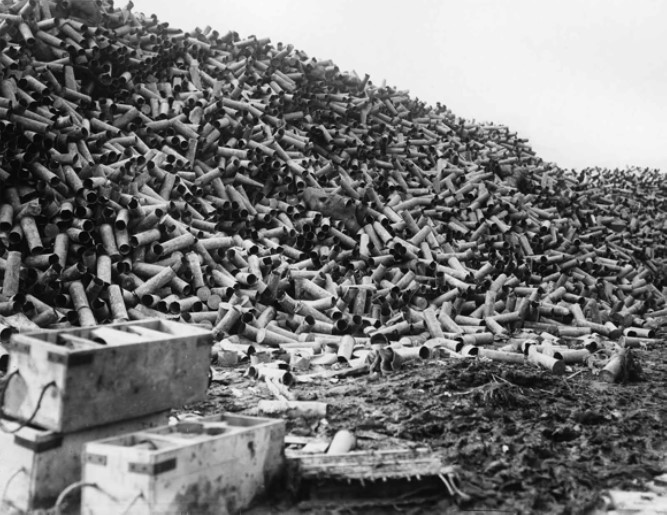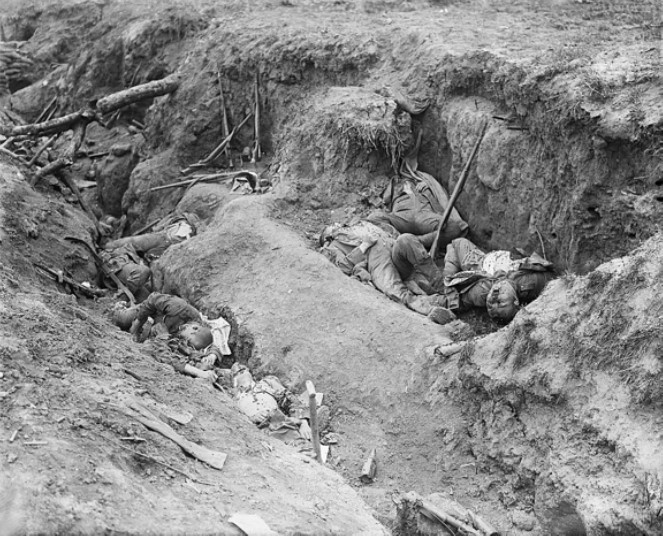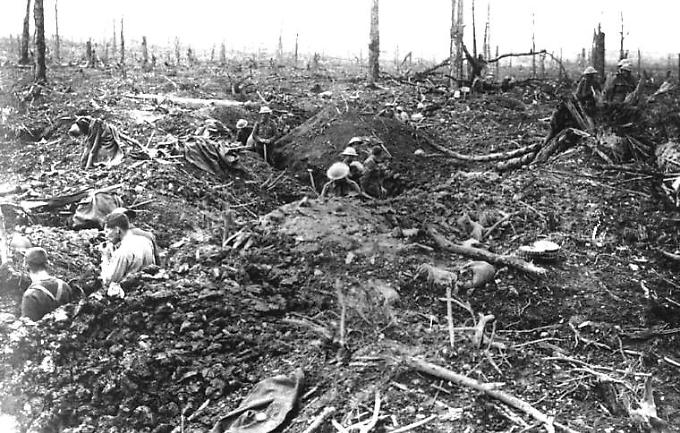The blackest day in the history of the British Army
By Phil Wood
Phil said the 1916 battle (actually 13 individual battles) is the subject of much misinformation arising from the fact it was the first such event filmed and shown in cinemas at home and more recently the subject of satirical shows such as ‘Oh What a Lovely War’ and ‘Black Adder’ – “another futile gesture”. The phrase ‘Lions led by donkeys’ was popularised by Alan Clark in his 1961 book, but originated with the German Army during the Great war. Numbers quoted about the Battle of the Somme are often quite erroneous, due to journalists and others not understanding the definition of casualties and taking it to mean killed, instead of the sum of killed, missing, and wounded. That said, the numbers are still appalling.
So what was it all about. By the end of 1914 and through 1915 the war on the Western Front had ground to a halt with both sides entrenched opposite one another from the North Sea in Belgium to the Swiss border south of Mulhouse in eastern France. Much of this line was static and largely uncontested for the whole war. Gallipoli, promoted by Churchill, was intended to draw some of the Germans away from the Western Front, but turned into a complete disaster when the Turks proved to be more than capable of repelling the invasion forces, and without German help.
A conference at Chantilly at December 1916 started with the allies planning to attack on all fronts in 1916, including in Italy and Russia. Since the French didn’t trust the British, they insisted that the attack should be focused where the British and French armies met side by side at the river Somme.
In early 1916 the Germans attacked the French lines at Verdun and took two of the outlying, massive, defensive, French forts. Verdun for historical reasons is sacred to the French and so they threw vast numbers of men into the defences. The Germans had intended it to be a war of attrition to cripple the French forces but they themselves lost far more men than they expected. In parallel with this the Russians carried out the Brusilov offensive on the Eastern Front in modern day Ukraine from June to September 1916 which was among the most lethal battles in world history with Russian, German, Austro-Hungarian and Ottoman casualties in the order of 2.5 million men.
The two allied army leaders, Joffre and Haig, had agreed in February that the objects of the offensive were:
• To relieve the German pressure on Verdun;
• Assist the allies on the other fronts;
• Wear down the opposing forces.
Note there was nothing about objectives in the longer term should the attacks be successful.
By mid 1916 the British Expeditionary Force ( BEF) which was initially18,000 men had grown to approximately 1 million men in 4 armies. The Battles of the Somme involved the British 4th Army and two French armies. The British were already across the Somme which is a small river but facing the Germans who were on high ground, always an advantage. The French needed to cross the Somme.
Generals Foch and Fayolle were in command of the French armies; Generals Haig and Rawlinson commanded the British and the allies were opposed by the German Generals von Falkenhayn and von Below.
Both sides were in systems of trenches and the British plan was to obliterate the German trenches with a seven day artillery bombardment. Phil showed a photo of an absolutely enormous pile of spent shell cases. (See below).
Unfortunately this barrage was not effective because most of the German troops were in very deep dugouts which were nearly impregnable to the artillery shells. On the First of July 1916 the British attacked behind a creeping artillery barrage, the guns firing over their heads to land the shells in front of the soldiers. Again the theory was better than the practice as often the men could not keep up with the pace of the barrage or shells fell short killing them. It was disastrous as the soldiers walked into the German machine guns which had been brought out of the dugouts while they were struggling to get through the barbed wire. The wire was much a much heavier gauge than that used on farms. It had been assumed that the artillery shells would destroy it, as cutting it with wire cutters was difficult and dangerous. In fact the shelling had made it worse by chewing it into the ground. The outcome was that the attacking British army took 60,000 casualties that first day of whom 19,240 died. Without doubt the worst day in the history of the British Army.
The British troops comprised a few Regulars from before the war, some experienced Territorials, but mainly Kitchener’s New Army who had no experience and were not very well trained. Many of these were the famous ‘Pals Battalions’ and some of them were almost completely wiped out leaving whole towns in mourning, particularly in the North of England. (The Accrington Pals started with about 700men of which 585 were reported dead or wounded on day one). After the initial mass assaults which continued for another week with further horrendous losses of men for little gain of territory, the Somme offensive became a series of smaller actions by the British which were more effective. Phil said the action in woodland was particularly awful. These battles continued until November 1916 when winter and bad weather brought a sensible halt.
The Battle of Flers-Courcelette in September had seen the British try their new secret weapon, the Tank. Most of the tanks broke down but one tank was successful and showed the concept was promising as it was able to squash barbed wire, cross trenches and the crew were protected from the German machine guns.
The British had gradually pushed the Germans back at a terrible cost in men and ammunition. One unit took their first day’s objective in only late September. By November both sides were saying ‘If only peace would come’. It had been a war of attrition. The Germans had sustained about 500,000 casualties and were running out of manpower. If the Somme means horror in the UK, for the Germans the Somme was the muddy grave of its Field Army. It was a victory for the British in terms of damage done to the Germans but at a terrible price.
In the winter of 1916/7 the Germans withdrew to their Hindenberg Line giving the British a big land gain, but the Germans had chosen this defensive line very well so still held a big advantage.
Phil said the Battle of the Somme is only fourth in the list of casualties in World War 1 but it is all relative. If you visit the Thiepval Memorial you will see a list of the names of missing British Soldiers, all 72,000.
Thank you Phil for explaining a very difficult subject which probably has no rational explanation.
Richard Brown (TADS Newsletter, March 2021)
NB. The term British should be taken to include Empire troops, including; Canadians, Australians, Indians, South Africans, and New Zealanders.
Phil Wood recommended three books about the Somme:
1. Bloody Victory by William Philpott,
2. The Somme by Peter Hart (also available as an audio book),
3. Fighting on the Somme (The Germans’ story) By Jack Sheldon

Above – A mountain of spent shell cases. Below – A captured German trench.

Richard Brown


